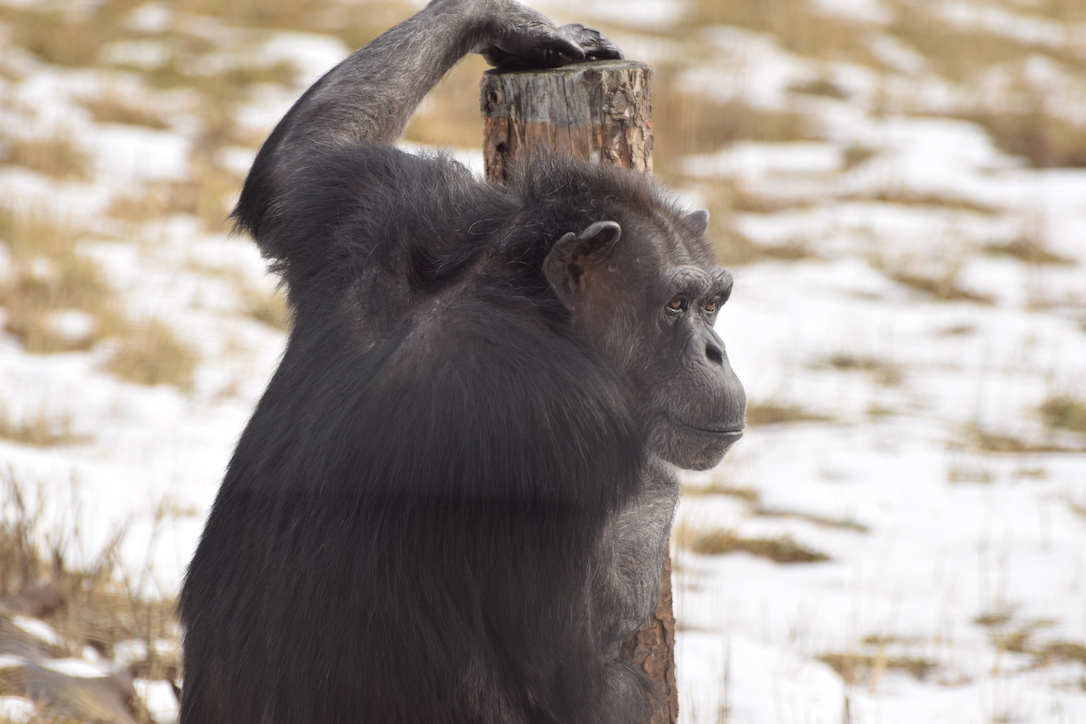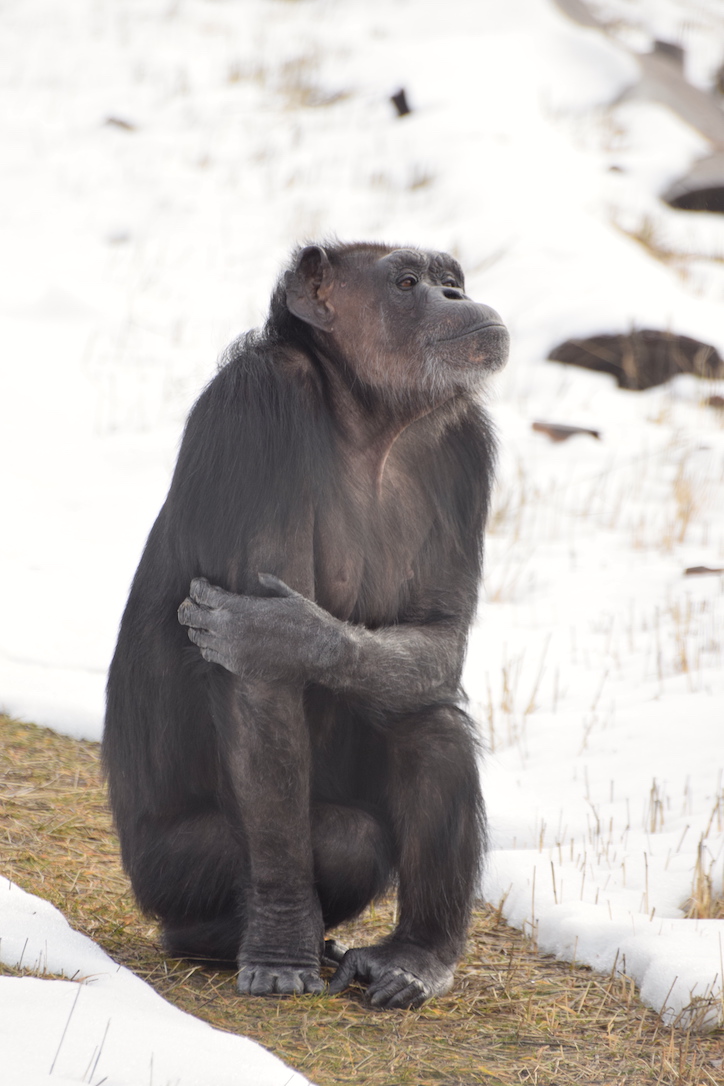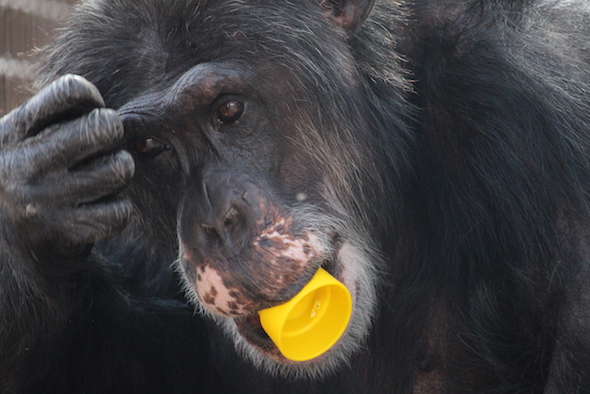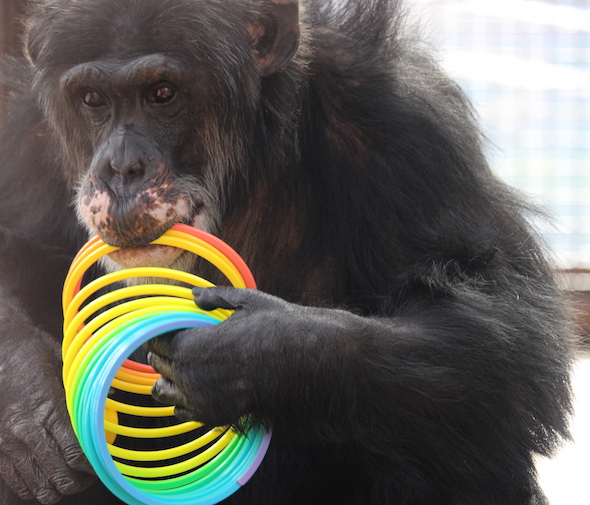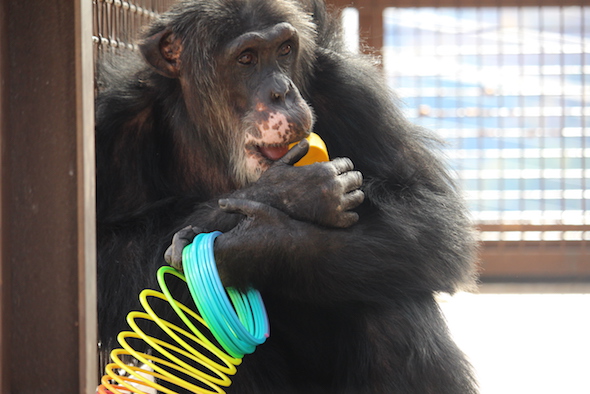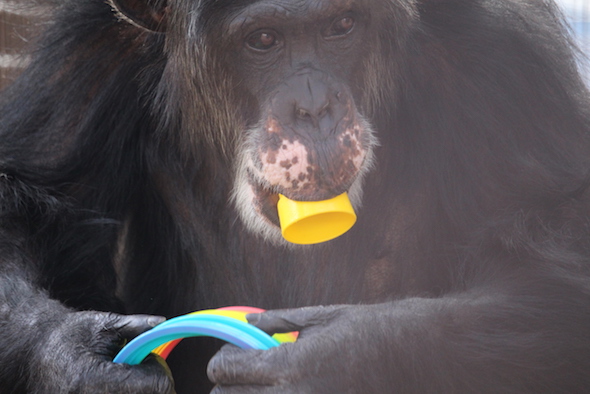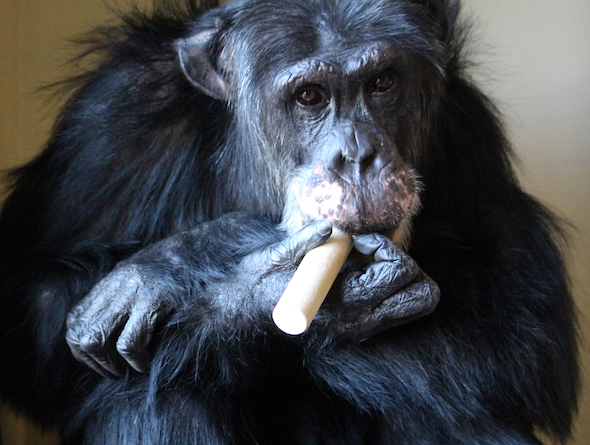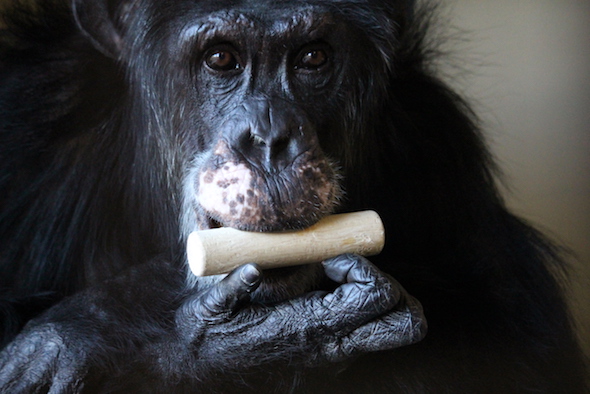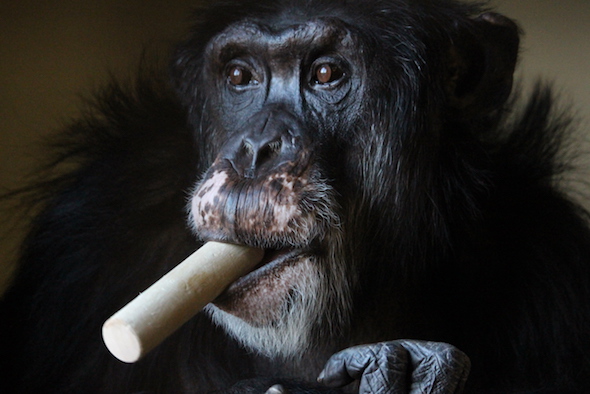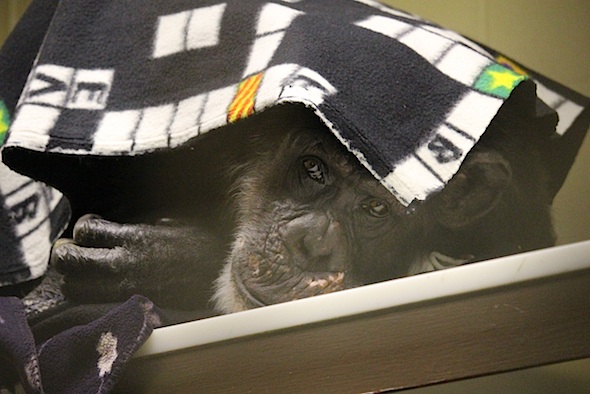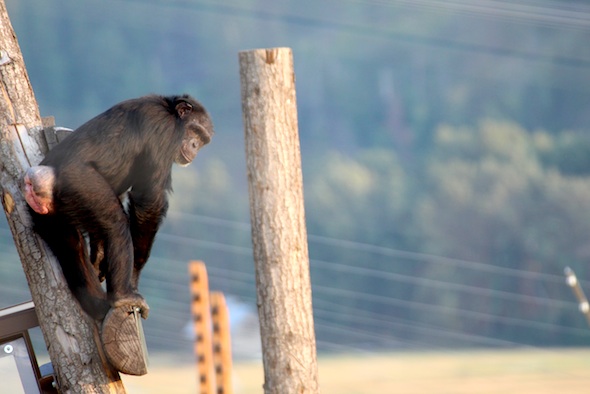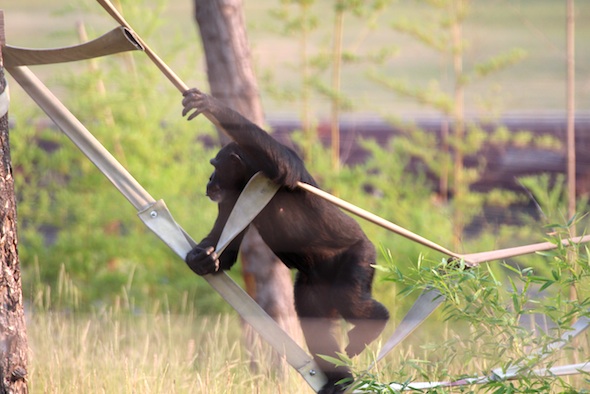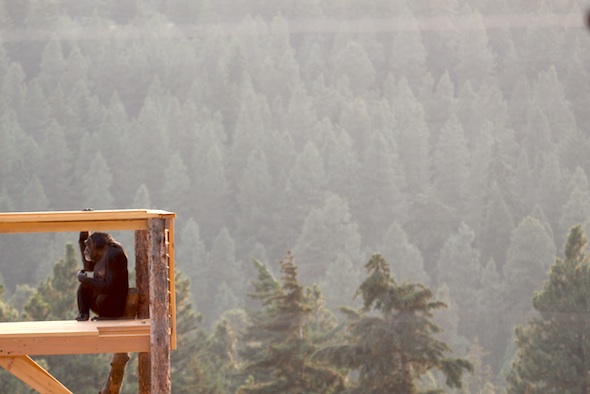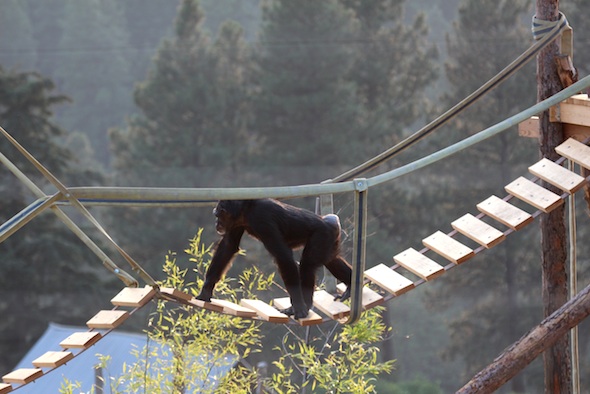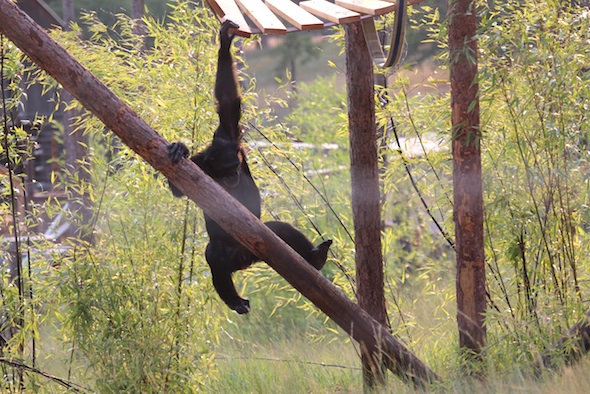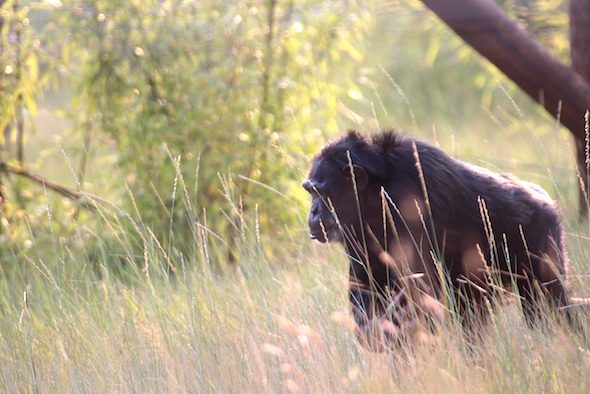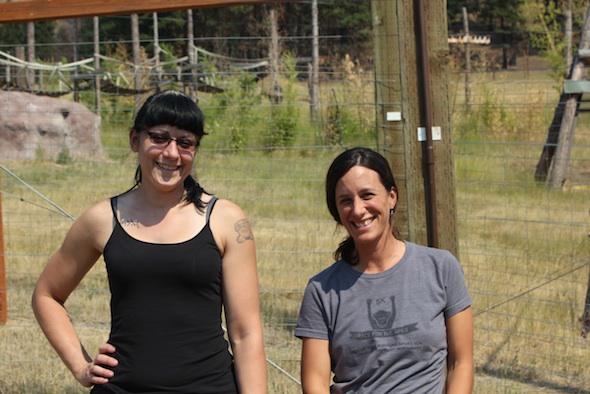No, this post is not about Annie eating pretzels. It’s partially about Annie Chimpanzee, as seen in these photos, but it’s also about all the enormous pretzels, vegan bratwurst, and craft beer that our staff are going to consume during tonight’s visit to a magical place: Leavenworth.
For those of you who aren’t familiar with the area, Leavenworth is a town located north of the sanctuary in the shadow of the Cascades. It boasts a Bavarian theme and is known for its charm, cuisine, and recreation. The CSNW crew typically makes a pilgrimage there every December, but we missed our opportunity this year since Burrito’s medications had to be administered each night. Consequently, tonight’s itinerary includes our annual group trip to the fabled mountain village. We are also celebrating the addition of Chad to the team, and this will be our first outing with him as a full-time staff member. We can only hope that he proves to be as valuable to our trivia team as he is to our care staff.
Therefore, I’ll withhold my summary of today’s events since the other caregivers are rushing me to finish writing the blog and closing down the Chimp House. Instead, I’ll leave you all with a few photos of Annie, who was the first chimpanzee to venture out onto the Hill today. It was unseasonably warm and the chimps were able to tiptoe on dry ground to avoid the remaining patches of snow.
I’d write more, but an evening of alpine fun awaits.
